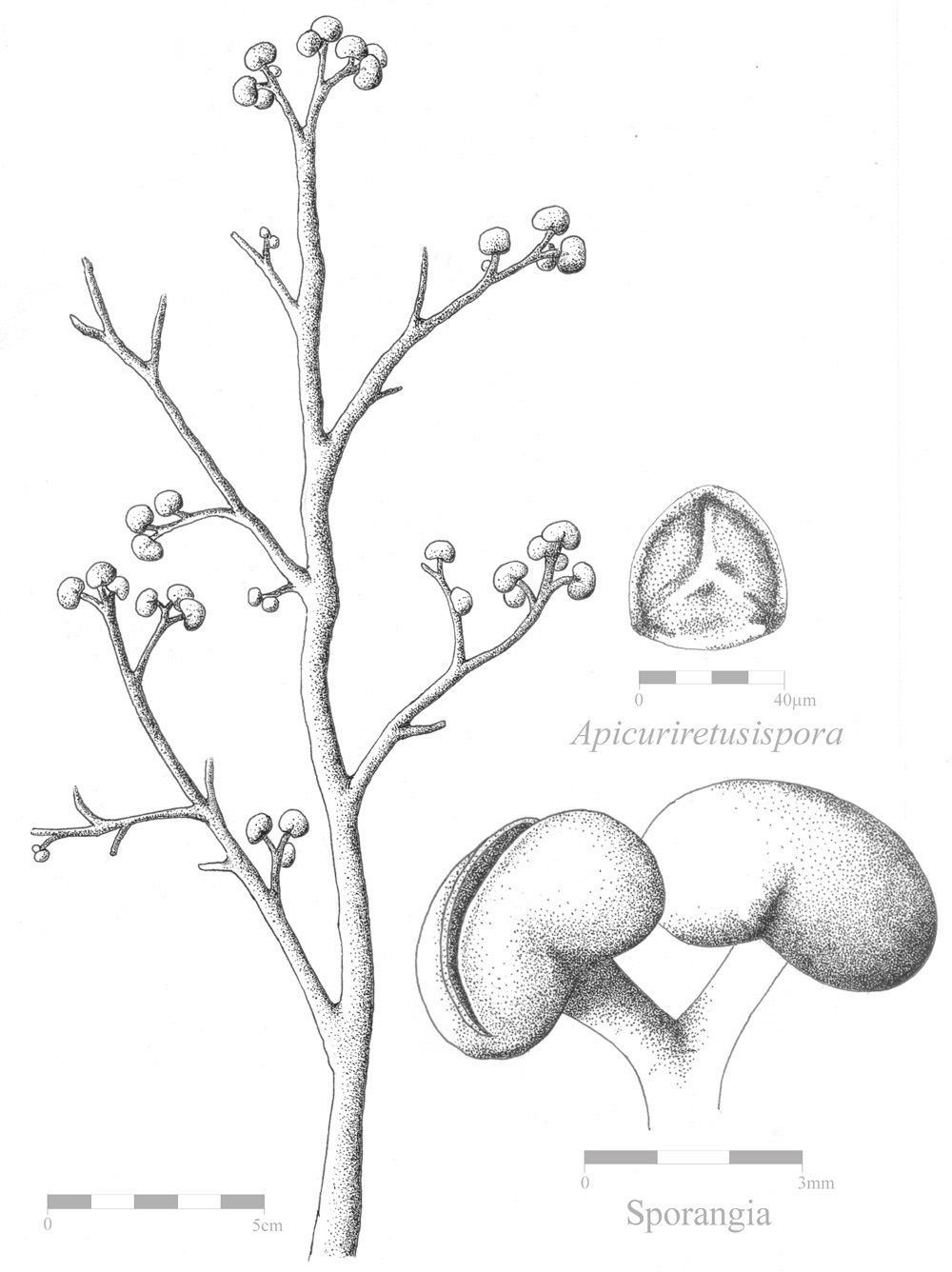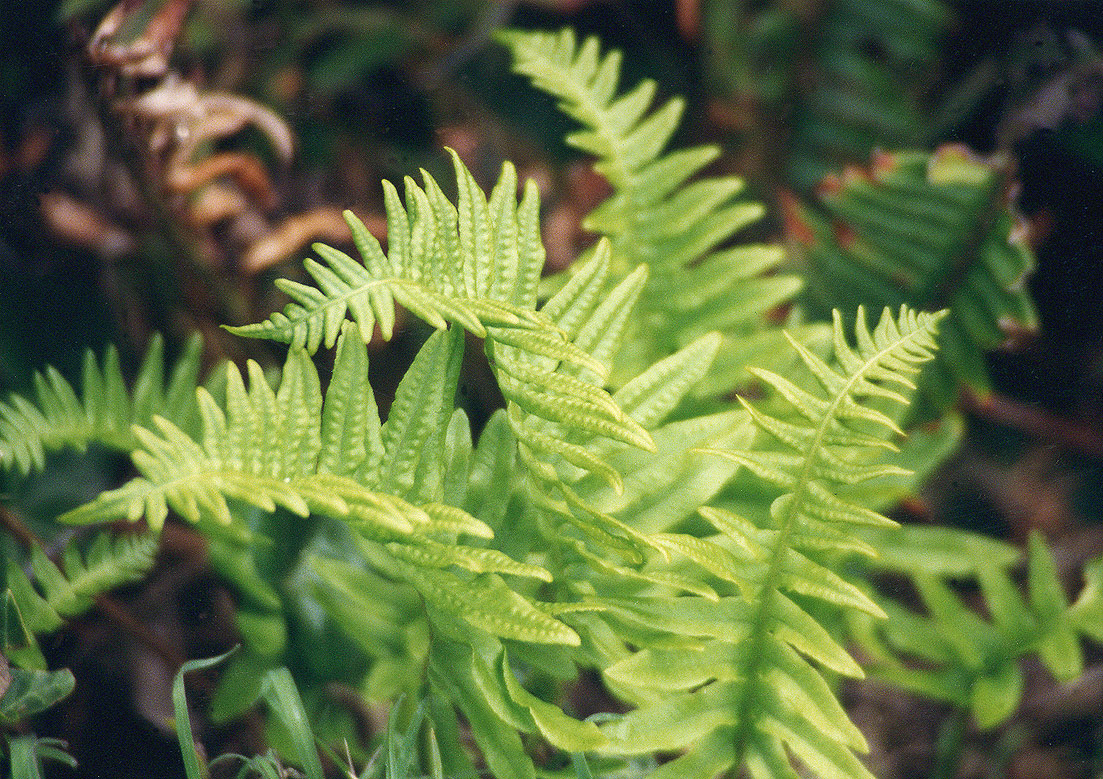|
Euphyllophytina
The euphyllophytes are a clade of plants within the tracheophytes (the vascular plants). The group may be treated as an unranked clade, a division under the name Euphyllophyta or a subdivision under the name Euphyllophytina. The euphyllophytes are characterized by the possession of true leaves ("megaphylls"), and comprise one of two major lineages of extant vascular plants. As shown in the cladogram below, the euphyllophytes have a sister relationship to the lycopodiophytes or lycopsids. Unlike the lycopodiophytes, which consist of relatively few presently living or extant taxa, the euphyllophytes comprise the vast majority of vascular plant lineages that have evolved since both groups shared a common ancestor more than 400 million years ago. The euphyllophytes consist of two lineages, the spermatophytes A seed plant or spermatophyte (; New Latin ''spermat-'' and Greek ' (phytón), plant), also known as a phanerogam (taxon Phanerogamae) or a phaenogam (taxon Phaenogamae), i ... [...More Info...] [...Related Items...] OR: [Wikipedia] [Google] [Baidu] |
Vascular Plant
Vascular plants (), also called tracheophytes (, ) or collectively tracheophyta (; ), are plants that have lignin, lignified tissues (the xylem) for conducting water and minerals throughout the plant. They also have a specialized non-lignified Tissue (biology), tissue (the phloem) to conduct products of photosynthesis. The group includes most embryophyte, land plants ( accepted known species) excluding mosses. Vascular plants include the clubmosses, Equisetum, horsetails, ferns, gymnosperms (including conifers), and angiosperms (flowering plants). They are contrasted with nonvascular plants such as mosses and green algae. Scientific names for the vascular plants group include Tracheophyta, Tracheobionta and Equisetopsida sensu lato, Equisetopsida ''sensu lato''. Some early land plants (the rhyniophytes) had less developed vascular tissue; the term eutracheophyte has been used for all other vascular plants, including all living ones. Historically, vascular plants were known as "hi ... [...More Info...] [...Related Items...] OR: [Wikipedia] [Google] [Baidu] |
Rhyniopsida
The rhyniophytes are a group of extinct early vascular plants that are considered to be similar to the genus '' Rhynia'', found in the Early Devonian (around ). Sources vary in the name and rank used for this group, some treating it as the class Rhyniopsida, others as the subdivision Rhyniophytina or the division Rhyniophyta. The first definition of the group, under the name Rhyniophytina, was by Banks, since when there have been many redefinitions, including by Banks himself. "As a result, the Rhyniophytina have slowly dissolved into a heterogeneous collection of plants ... the group contains only one species on which all authors agree: the type species ''Rhynia gwynne-vaughanii''". When defined very broadly, the group consists of plants with dichotomously branched, naked aerial axes ("stems") with terminal spore-bearing structures (sporangia). The rhyniophytes are considered to be stem group tracheophytes (vascular plants). Definitions The group was described as a subdivisio ... [...More Info...] [...Related Items...] OR: [Wikipedia] [Google] [Baidu] |
Ferns
The ferns (Polypodiopsida or Polypodiophyta) are a group of vascular plants (plants with xylem and phloem) that reproduce via spores and have neither seeds nor flowers. They differ from mosses by being vascular, i.e., having specialized tissues that conduct water and nutrients, and in having life cycles in which the branched sporophyte is the dominant phase. Ferns have complex leaves called megaphylls that are more complex than the microphylls of clubmosses. Most ferns are leptosporangiate ferns. They produce coiled fiddleheads that uncoil and expand into fronds. The group includes about 10,560 known extant species. Ferns are defined here in the broad sense, being all of the Polypodiopsida, comprising both the leptosporangiate ( Polypodiidae) and eusporangiate ferns, the latter group including horsetails, whisk ferns, marattioid ferns, and ophioglossoid ferns. The fern crown group, consisting of the leptosporangiates and eusporangiates, is estimated to have origin ... [...More Info...] [...Related Items...] OR: [Wikipedia] [Google] [Baidu] |
Tracheophyta
Vascular plants (), also called tracheophytes (, ) or collectively tracheophyta (; ), are plants that have lignin, lignified tissues (the xylem) for conducting water and minerals throughout the plant. They also have a specialized non-lignified Tissue (biology), tissue (the phloem) to conduct products of photosynthesis. The group includes most embryophyte, land plants ( accepted known species) excluding mosses. Vascular plants include the clubmosses, Equisetum, horsetails, ferns, gymnosperms (including conifers), and angiosperms (flowering plants). They are contrasted with nonvascular plants such as mosses and green algae. Scientific names for the vascular plants group include Tracheophyta, Tracheobionta and Equisetopsida sensu lato, Equisetopsida ''sensu lato''. Some early land plants (the rhyniophytes) had less developed vascular tissue; the term eutracheophyte has been used for all other vascular plants, including all living ones. Historically, vascular plants were known as "hi ... [...More Info...] [...Related Items...] OR: [Wikipedia] [Google] [Baidu] |
Fern
The ferns (Polypodiopsida or Polypodiophyta) are a group of vascular plants (plants with xylem and phloem) that reproduce via spores and have neither seeds nor flowers. They differ from mosses by being vascular, i.e., having specialized tissues that conduct water and nutrients, and in having life cycles in which the branched sporophyte is the dominant phase. Ferns have complex leaf, leaves called megaphylls that are more complex than the microphylls of clubmosses. Most ferns are leptosporangiate ferns. They produce coiled Fiddlehead fern, fiddleheads that uncoil and expand into fronds. The group includes about 10,560 known extant species. Ferns are defined here in the broad sense, being all of the Polypodiopsida, comprising both the leptosporangiate (Polypodiidae (plant), Polypodiidae) and eusporangiate ferns, the latter group including horsetails, Psilotaceae, whisk ferns, marattioid ferns, and ophioglossoid ferns. The fern crown group, consisting of the leptosporangiates and ... [...More Info...] [...Related Items...] OR: [Wikipedia] [Google] [Baidu] |
Tracheophytes
Vascular plants (), also called tracheophytes (, ) or collectively tracheophyta (; ), are plants that have lignified tissues (the xylem) for conducting water and minerals throughout the plant. They also have a specialized non-lignified tissue (the phloem) to conduct products of photosynthesis. The group includes most land plants ( accepted known species) excluding mosses. Vascular plants include the clubmosses, horsetails, ferns, gymnosperms (including conifers), and angiosperms (flowering plants). They are contrasted with nonvascular plants such as mosses and green algae. Scientific names for the vascular plants group include Tracheophyta, Tracheobionta and Equisetopsida ''sensu lato''. Some early land plants (the rhyniophytes) had less developed vascular tissue; the term eutracheophyte has been used for all other vascular plants, including all living ones. Historically, vascular plants were known as "higher plants", as it was believed that they were further evolved than ot ... [...More Info...] [...Related Items...] OR: [Wikipedia] [Google] [Baidu] |
Polypodiophyta
The ferns (Polypodiopsida or Polypodiophyta) are a group of vascular plants (plants with xylem and phloem) that reproduce via spores and have neither seeds nor flowers. They differ from mosses by being vascular, i.e., having specialized tissues that conduct water and nutrients, and in having life cycles in which the branched sporophyte is the dominant phase. Ferns have complex leaves called megaphylls that are more complex than the microphylls of clubmosses. Most ferns are leptosporangiate ferns. They produce coiled fiddleheads that uncoil and expand into fronds. The group includes about 10,560 known extant species. Ferns are defined here in the broad sense, being all of the Polypodiopsida, comprising both the leptosporangiate ( Polypodiidae) and eusporangiate ferns, the latter group including horsetails, whisk ferns, marattioid ferns, and ophioglossoid ferns. The fern crown group, consisting of the leptosporangiates and eusporangiates, is estimated to have originated in ... [...More Info...] [...Related Items...] OR: [Wikipedia] [Google] [Baidu] |
Eophyllophyton
''Eophyllophyton bellum'' is the oldest known plant bearing megaphyllous leaves. In 2013, Hao (one of the original taxon authors) and Xue placed the genus in a new class Eophyllophytopsida, considered to be an isolated lineage in the euphyllophyte The euphyllophytes are a clade of plants within the tracheophytes (the vascular plants). The group may be treated as an unranked clade, a division under the name Euphyllophyta or a subdivision under the name Euphyllophytina. The euphyllophytes ...s. References Devonian plants Prehistoric plant genera {{devonian-plant-stub ... [...More Info...] [...Related Items...] OR: [Wikipedia] [Google] [Baidu] |
Trimerophyta
Trimerophytopsida (or Trimeropsida) is a class of early vascular plants from the Devonian, informally called trimerophytes. It contains genera such as '' Psilophyton''. This group is probably paraphyletic, and is believed to be the ancestral group from which both the ferns and seed plants evolved. Different authors have treated the group at different taxonomic ranks using the names Trimerophyta, Trimerophytophyta, Trimerophytina, Trimerophytophytina and Trimerophytales. Taxonomy At first most of the early land plants other than the bryophytes (i.e. the polysporangiophytes) were placed in a single class Psilophyta, established in 1917 by Kidston and Lang. As additional fossils were discovered and described, it became apparent that the Psilophyta were not a homogeneous group of plants. In 1968 Banks first proposed splitting this taxon into three groups, which he put at the rank of subdivision; he clarified his proposal in 1975. One of the three groups was the Trimerophytina. The s ... [...More Info...] [...Related Items...] OR: [Wikipedia] [Google] [Baidu] |
Gnetophytes
Gnetophyta () is a division of plants (alternatively considered the subclass Gnetidae or order Gnetales), grouped within the gymnosperms (which also includes conifers, cycads, and ginkgos), that consists of some 70 species across the three relict genera: '' Gnetum'' (family Gnetaceae), ''Welwitschia'' (family Welwitschiaceae), and '' Ephedra'' (family Ephedraceae). The earliest unambiguous records of the group date to the Jurassic, and they achieved their highest diversity during the Early Cretaceous. The primary difference between gnetophytes and other gymnosperms is the presence of vessel elements, a system of small tubes (xylem) that transport water within the plant, similar to those found in flowering plants. Because of this, gnetophytes were once thought to be the closest gymnosperm relatives to flowering plants, but more recent molecular studies have brought this hypothesis into question, with many recent phylogenies finding them to be nested within the conifers. Though it i ... [...More Info...] [...Related Items...] OR: [Wikipedia] [Google] [Baidu] |
Leptosporangiate Ferns
The Polypodiidae, commonly called leptosporangiate ferns, formerly Leptosporangiatae, are one of four subclasses of ferns, the largest of these being the largest group of living ferns, including some 11,000 species worldwide. The group has also been treated as the class Pteridopsida or Polypodiopsida, although other classifications assign them a different rank. Older names for the group include Filicidae and Filicales, although at least the "water ferns" (now the Salviniales) were then treated separately. The leptosporangiate ferns are one of the four major groups of ferns, with the other three being the eusporangiate ferns comprising the marattioid ferns (Marattiidae, Marattiaceae), the horsetails (Equisetiidae, Equisetaceae), and whisk ferns and moonworts. There are approximately 8465 species of living leptosporangiate ferns, compared with about 2070 for all other ferns, totalling 10535 species of ferns. Almost a third of leptosporangiate fern species are epiphytes. These ... [...More Info...] [...Related Items...] OR: [Wikipedia] [Google] [Baidu] |
Horsetails
''Equisetum'' (; horsetail) is the only living genus in Equisetaceae, a family of vascular plants that reproduce by spores rather than seeds. ''Equisetum'' is a "living fossil", the only living genus of the entire subclass Equisetidae, which for over 100 million years was much more diverse and dominated the understorey of late Paleozoic forests. Some equisetids were large trees reaching to tall. The genus ''Calamites'' of the family Calamitaceae, for example, is abundant in coal deposits from the Carboniferous period. The pattern of spacing of nodes in horsetails, wherein those toward the apex of the shoot are increasingly close together, is said to have inspired John Napier to invent logarithms. Modern horsetails first appeared during the Jurassic period. A superficially similar but entirely unrelated flowering plant genus, mare's tail (''Hippuris''), is occasionally referred to as "horsetail", and adding to confusion, the name "mare's tail" is sometimes applied to ''Equisetu ... [...More Info...] [...Related Items...] OR: [Wikipedia] [Google] [Baidu] |





